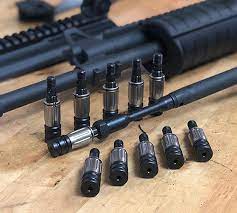How Much Data Does a WiFi Security Camera Use?

Discover the data consumption of WiFi security cameras. Explore the factors affecting data usage, tips to optimize it, and FAQs. Get insights on securing your home while managing data efficiently.
Contents
- 1 Introduction
- 2 Data Consumption Basics
- 3 Video Quality
- 4 Frame Rate
- 5 Recording Duration
- 6 Compression
- 7 Live Streaming
- 8 Factors Influencing Data Consumption
- 9 Motion Detection
- 10 Cloud vs. Local Storage
- 11 Alerts and Notifications
- 12 Night Vision
- 13 Mobile App Access
- 14 Optimizing Data Usage
- 15 Adjust Video Quality
- 16 Motion Detection Sensitivity
- 17 Scheduled Recording
- 18 Local Storage
- 19 WiFi Network
- 20 Data Monitoring
- 21 FAQs
- 22 Can I use WiFi security cameras with limited data plans?
- 23 Do all WiFi security cameras offer data optimization features?
- 24 Are there security risks associated with using cloud storage for camera footage?
- 25 How can I improve my camera’s night vision without increasing data usage?
- 26 What’s the best frame rate for WiFi security cameras to balance data usage and video quality?
- 27 Conclusion
Introduction
In this digital age, WiFi security cameras have become an integral part of safeguarding our homes. However, concerns about data usage often arise. Understanding “how much data does a WiFi security camera use” is crucial for making informed decisions. In this article, we delve into the world of WiFi security cameras, exploring their data consumption, factors influencing it, and offering practical tips for efficient data management.
Data Consumption Basics
Let’s start by understanding the fundamentals of data consumption in WiFi security cameras. These devices continuously capture and transmit video and audio data to your connected devices or cloud storage. The amount of data used depends on several factors:
Video Quality
The higher the video quality, the more data is required. Cameras with 1080p or 4K resolution consume more data compared to those with lower resolutions.
Frame Rate
Cameras record at a certain number of frames per second. Higher frame rates mean more data usage. Common rates are 15, 30, or 60 frames per second.
Recording Duration
The duration for which the camera records affects data usage. Cameras that record 24/7 will consume more data than those triggered only by motion.
Compression
Cameras use compression algorithms to reduce data size. Efficient compression can significantly decrease data usage.
Live Streaming
If you frequently live stream your camera feed, expect higher data consumption, especially when viewing in high definition.
Factors Influencing Data Consumption
Data consumption varies among WiFi security cameras due to specific features and settings. Several factors can influence the amount of data these devices use:
Motion Detection
Cameras that employ motion detection and only record when movement is detected consume less data than those that record continuously.
Cloud vs. Local Storage
Cameras that save footage in the cloud may use more data than those with local storage options.
Alerts and Notifications
Configuring your camera to send alerts and notifications when it detects activity can impact data usage.
Night Vision
Cameras with night vision technology may use more data in low-light conditions.
How to See Who Shared Your Instagram Story
Mobile App Access
Frequent access to the camera feed through mobile apps can increase data consumption.
Optimizing Data Usage
To manage data effectively and ensure your WiFi security camera doesn’t become a data hog, follow these tips:
Adjust Video Quality
Set the video quality to a level that balances data usage and image clarity. Lower quality for less important areas.
Motion Detection Sensitivity
Fine-tune motion detection sensitivity to reduce unnecessary recordings.
Scheduled Recording
Create a schedule for your camera to record during specific hours, conserving data during idle times.
Local Storage
Consider using local storage solutions instead of cloud-based options to control data usage.
WiFi Network
Ensure a strong and stable WiFi connection to prevent data wastage due to interruptions.
Data Monitoring
Regularly check your data usage to identify any unexpected spikes and adjust camera settings accordingly.
FAQs
Can I use WiFi security cameras with limited data plans?
Yes, but it’s crucial to monitor your data consumption and adjust camera settings to stay within your plan’s limits.
Do all WiFi security cameras offer data optimization features?
No, features vary among different camera models. Always check the specifications for data management options.
Are there security risks associated with using cloud storage for camera footage?
Cloud storage can be secure, but it’s essential to use strong passwords and enable two-factor authentication for added security.
How can I improve my camera’s night vision without increasing data usage?
Upgrading to a camera with better low-light capabilities can help, but this might slightly increase data consumption.
What’s the best frame rate for WiFi security cameras to balance data usage and video quality?
A frame rate of 15 to 30 frames per second is usually sufficient for most surveillance purposes.
Conclusion
WiFi security cameras are invaluable for home security, but understanding their data usage is key to managing them efficiently. By considering factors like video quality, motion detection, and scheduled recording, you can strike a balance between security and data conservation. With these tips and insights, you can protect your home without overloading your data plan.





